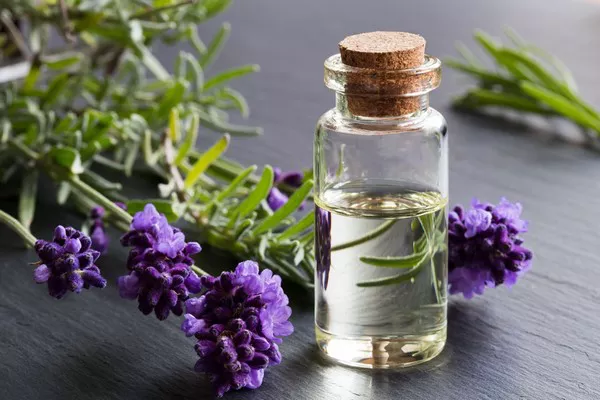Flowers have long been celebrated for their beauty, symbolism, and ability to brighten any occasion. Among the vast array of floral varieties, there exists a captivating selection that begins with the letter “E.” From the iconic elegance of the Easter Lily to the vibrant energy of the Echinacea, each flower brings its unique charm to gardens, bouquets, and floral arrangements. In this comprehensive guide, we delve into the world of nine enchanting flowers that start with the letter “E,” exploring their characteristics, symbolism, and cultural significance.
1. Easter Lily (Lilium longiflorum)
The Easter Lily stands as an emblem of purity, renewal, and hope, making it a cherished symbol during the Easter season. Native to the Ryukyu Islands of Japan, this stunning flower features trumpet-shaped, white blooms that exude a delicate fragrance. With its association with springtime and religious festivals, the Easter Lily holds a special place in both religious and secular contexts, adorning churches, homes, and gardens alike.
2. Eustoma (Eustoma grandiflorum)
Also known as Lisianthus, the Eustoma captivates with its lush, ruffled petals and vibrant hues ranging from soft pastels to deep jewel tones. Native to warm regions of the southern United States, Mexico, and the Caribbean, this tender perennial is prized for its longevity as a cut flower, making it a popular choice for bouquets and floral arrangements. Symbolizing appreciation and gratitude, the Eustoma adds a touch of elegance to any floral display.
3. Echinacea (Echinacea purpurea)
Renowned for its medicinal properties and striking beauty, the Echinacea, or Purple Coneflower, is a perennial herb native to North America. Characterized by its daisy-like blooms with prominent raised centers, this hardy flower thrives in sunny, well-drained soils, attracting butterflies and bees with its nectar-rich blossoms. In addition to its ornamental value, Echinacea is esteemed for its immune-boosting properties, making it a staple in herbal medicine.
4. Edelweiss (Leontopodium alpinum)
Nestled amidst the rugged alpine terrain of Europe, the Edelweiss symbolizes courage, purity, and enduring love. This iconic mountain flower boasts star-shaped blooms with soft, woolly petals that shimmer with a silvery sheen. Despite its delicate appearance, the Edelweiss is a resilient perennial that thrives in rocky, high-altitude environments, clinging to sheer cliffs and rocky crevices. Revered for its rarity and beauty, the Edelweiss has inspired legends, poems, and songs throughout history.
5. Evening Primrose (Oenothera biennis)
As the sun sets, the Evening Primrose unfurls its delicate, lemon-scented blossoms, casting a soft glow in the twilight hours. Native to North America, this biennial plant blooms profusely in summer, attracting nocturnal pollinators such as moths and bats with its sweet fragrance. Beyond its ornamental value, the Evening Primrose is esteemed for its medicinal properties, with its oil extracted from the seeds used in herbal remedies for various ailments.
6. Eucalyptus (Eucalyptus spp.)
The Eucalyptus tree, native to Australia, is renowned for its aromatic foliage and distinctive scent, which infuses the air with a refreshing, invigorating fragrance. While not traditionally considered a flower, the Eucalyptus deserves recognition for its role in floral arrangements, where its silvery-blue leaves add texture, color, and fragrance. Revered for its therapeutic properties, Eucalyptus oil is prized for its antiseptic, decongestant, and stress-relieving qualities.
7. Everlasting (Helichrysum spp.)
As its name suggests, the Everlasting, or Immortelle, retains its vibrant color and form long after being cut, making it a popular choice for dried flower arrangements and wreaths. Native to Mediterranean regions, this hardy perennial boasts clusters of tiny, papery flowers in shades of yellow, orange, and red, which retain their brilliance even when dried. Symbolizing eternal love and remembrance, the Everlasting holds a special place in weddings, memorials, and festive celebrations.
8. Eryngium (Eryngium spp.)
Also known as Sea Holly, the Eryngium enchants with its spiky, metallic-blue bracts and prickly foliage, evoking the rugged beauty of coastal landscapes. Native to Europe, Asia, and the Americas, this hardy perennial thrives in sandy, well-drained soils, attracting pollinators with its unique, globe-shaped flower heads. With its symbolism of protection and admiration, the Eryngium adds a touch of drama and intrigue to garden borders and floral arrangements.
9. Elephant’s Ear (Colocasia spp.)
The Elephant’s Ear, with its colossal, heart-shaped leaves, commands attention in any garden or landscape setting. Native to tropical regions of Asia and Polynesia, this perennial plant is prized for its dramatic foliage and architectural presence. While primarily grown for its ornamental value, certain varieties of Elephant’s Ear produce small, insignificant flowers that add a whimsical touch to the garden. With its symbolism of strength and prosperity, the Elephant’s Ear lends a tropical flair to gardens worldwide.
See Also: 8 Flowers That You Can Send for Sympathy
Conclusion
In conclusion, the world of flowers beginning with the letter “E” encompasses a diverse array of species, each possessing its unique beauty, symbolism, and cultural significance. From the iconic elegance of the Easter Lily to the rugged allure of the Eryngium, these enchanting blooms captivate the senses and inspire admiration wherever they bloom. Whether adorning a wedding bouquet, gracing a garden border, or dried in a timeless arrangement, these nine exquisite flowers add a touch of elegance and charm to any setting, celebrating the boundless beauty of nature.


